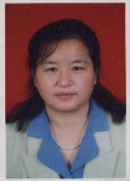Channels and Collaterals in TCM
Author: Dr. Lee
Clicks:
Time: 2010/11/26 16:50:17
Channels in TCM refer to the pathways of qi and blood. These pathways are interconnected with each other, forming a network to unite the body into an integrated whole. The system of Channels includes the following aspects.
1. Channels: The longitudinal pathways, like the trunk of trees, are called ring (Channels). Mainly there are twelve regular Channels which are connected with each other to form a circle. The name of each Channel is composed of three parts, organ, hand or foot, yin or yang. For instance, the Channel of the lung is called the Lung Channel of Hand-Taiyin.
2. Branches of Channels: to strengthen the connection between Channelsand the related organs as well as the relationship between one Channel andanother.
3. Collaterals: the sub-division of Channels, to transversely connect oneChannel with another. There are altogether 15 major Collaterals. In the body,there are distributed numerous small Collaterals known as floating Collateralsor minute Collaterals.
4. Eight extraordinary Channels: Based on the twelve regular Channels mentioned in Huang Di Nei Jing (Yellow Emperor's Canon of Medicine), Nan Jing (Canon on Eighty-One Difficult Issues) has added some more Channels recorded in some literature to TCM. Among these extra Channels, more importance later on was attached to the du mai (Governor Channel) and ren mai (Conception Channel) by doctors and qi gong practicers.
5. Musculature and skin divisions: In Huang Di Nei ling (Yellow Emperor's Canon of Medicine), tendons, muscles and joints were attributed to the twelve regular Channels and called tendons of the twelve regular Channels. The regions of the body surface over which the twelve regular Channels run were divided into twelve skin regions. These tendons and skin regions are not Channels, but they are the places in which qi and blood retain, accumulate, disperse and converge.
6. Acupoints: Acupoints are the places where qi and blood flow through and Channels converge with each other. However there are some special Acupoints that are not located on the Channels. Some of these special Acupoints are just tenderness known as A-shi Acupoint (Oh Yes Acupoint).
To those who are not specialized in TCM study, to understand the nature of Channels is difficult. Anatomically one cannot find such points on human body, but they bear great theoretical and clinical significance.
Firstly, the theory of Channels has been studied for quite a long time. Such studies were recorded in the silk book and bamboo slips unearthed in the 1970s, even earlier that the record in Huang Di Nei Jing (Yellow Emperor's Canon of Medicine). In these ancient records, there were altogether 11 Channels and the running routes of them were short. They were neither connected with each other nor related to the internal organs. There were also no records of Acupoints. The theory of Channels and Collaterals developed in the Han Dynasty was mainly based on the descriptions in Huang Di Nei Jing (Yellow Emperor's Canon of Medicine). During the early period of the Northern Song Dynasty (960-1127), Wang Weiyi cast a bronze figure of a normal human size labeled with 14 Channels and 657Acupoints.
Secondly, it is generally believed that only TCM concentrates on Channels. In fact in various systems of traditional medicine, there are similar descriptions about the flow of qi and blood. In traditional Indian medicine, the heart is described as a turnip connected with ten vessels and there are 24 more vessels starting from the navel. This is due to the fact that in ancient times people in different places accumulated their knowledge about medicine simply through observation.
Thirdly, before the communication with the Western medicine, Chinese doctors were unclear about the difference between Channels and vessels and nerve system. So in Huang Di Nei Jing (Yellow Emperor's Canon of Medicine) the superficial small vessels are called minute Collaterals. It believes that the reason why large Channels were invisible is due to the fact that they run deep inside the muscles. According to such an explanation, bluish complexion indicates cold which might be dealt with by pricking the small veins while reddish complexion indicates heat which can be removed by pricking the capillaries or small arteries.
Fourthly, the theory of Channels is a synthetic system. For instance, during the time when Huang Di Nei Jing (Yellow Emperor's Canon of Medicine) came into existence, doctors found that the tenderness beside the spine was related to the disease of certain organ and thus decided Lhe Back Shu Acupoints related to the five zang-organs respectively. However in the theory of Channels, these Acupoints located beside the spine all belong to the Bladder Channel of Foot-Taiyang. To know this fact is very important in understanding the relationship between the Bladder Channel and the other internal organs. Another example is the circulation circle of qi and blood formed by the twelve regular Channels. Such a circle, instead of starting from the heart, begins with the stomach. Because at that time the explanation about the production and movement of qi,and blood could only be made on the basis of the digestion and absorption of food.
Fifthly, there is a noticeable difference between the theory of Channels and pharmacy. In pharmacy, the knowledge about the action and indication of drugs has been constantly accumulated and renewed. However it is in Channels and Collaterals. The theory has been maintained unchanged almost for two thousand years after the system was established. The studies made by doctors in different dynasties mainly concentrated on finding evidence and proofs to further prove the established theory.

